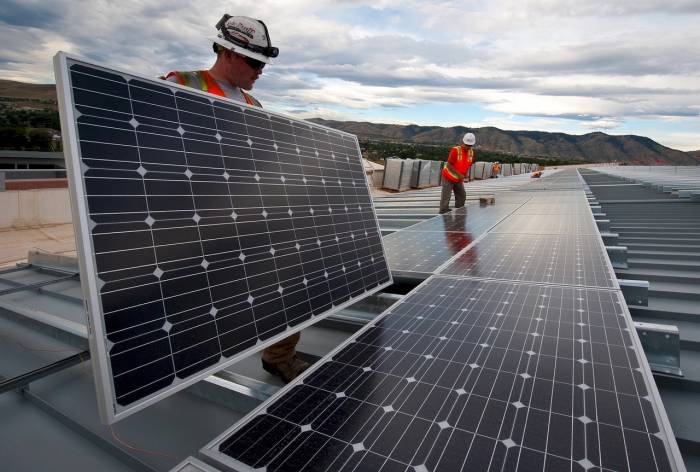
Image: Skeeze
Close to 1.8 million solar power systems are now installed in Australia – how much electricity have PV installations been generating?
While December figures aren’t available yet, the following are November 2017 estimates of distributed solar electricity generation from the Australian Photovoltaic Institute (APVI).
- New South Wales (+ ACT): 190,806 MWh
- Victoria: 140,389 MWh
- Queensland: 231,648 MWh
- South Australia: 93,584 MWh
- Western Australia : 110,614 MWh
- Tasmania : 15,503 MWh
- Northern Territory : 7,143 MWh
- TOTAL : 789,687 MWh
Below are total estimates from April 2015 (since APVI started keeping track) to the end of November 2017:
- New South Wales (+ ACT): 3,980,121 MWh
- Victoria: 2,725,40 MWh
- Queensland: 5,332,281 MWh
- South Australia: 2,041,650 MWh
- Western Australia: 2,044,609 MWh
- Tasmania: 299,109 MWh
- Northern Territory: 150,967 MWh
- TOTAL: 16,574,146 MWh
As well as saving many owners of solar panels a stack of cash on their electricity bills, these systems would have collectively avoided around 16.5 million tonnes of carbon emissions over the April 2015 – November 2017 period if the equivalent electricity had been generated by conventional coal-fired power generation (even more if it was all brown coal).
The Residential Rooftop Revolution Continues
The estimated percentage of private dwellings in Australia with solar panels has been progressively creeping up – here’s how things looked in November according to APVI:
- QLD: 30.7%
- SA: 30.1%
- WA: 24.3%
- NSW: 15.9%
- VIC: 14.7%
- TAS: 13.3%
- ACT: 13%
- NT: 11.7%
There’s still no shortage of rooftops in Australia that could be utilised for harvesting solar energy, even in states where installation levels are comparatively high.
While slightly reduced since January 1, Australia’s “solar rebate” is still very much alive and well at this point, so a healthy jump in numbers is expected this year as more Australians feeling the pinch of electricity costs switch on to the power-bill busting technology.
If you’re an owner of one of the 1,778,000+ small-scale commercial and home solar power systems installed across Australia, give yourself a pat on the back for your contribution to the very impressive numbers above and the role you’ve played in driving Australia’s solar revolution.
The statistics for electricity generated by distributed PV were calculated by APVI using data from the APVI Live Map (see the bottom of the page linked to for methodology). The source data for the above showing monthly estimated output since April 2015 can be downloaded here.
As well as the live map, the APVI web site contains a bunch of interesting tools and information, including PV installation maps and solar performance by climate region.

 RSS - Posts
RSS - Posts



With the above article including
”
While slightly reduced since January 1, Australia’s “solar rebate” is still very much alive and well at this point, so a healthy jump in numbers is expected this year as more Australians feeling the pinch of electricity costs switch on to the power-bill busting technology.
”
thence making this question pertinent to the article,
is the “solar rebate”, or “MTGAFYTGRTUFCOYSS” scheme limited in terms of domestic rooftop photovoltaic systems, to an initial installation of systems up to the maximum allowed to be installed at a time (5kW of inverter capacity on a single phase grid connection), or, is it also applicable to replacement systems, when the systems die after a couple of, or, few, years?
STCs may now no longer be given for replacement panels:
https://www.solarquotes.com.au/blog/stc-solar-panels-mb0230/
Could the report/article above, be published as an update, on a monthly basis?
Hello, Ronald.
Your response apparently contradicts the response posted at
https://www.solarquotes.com.au/blog/electricity-solar-australia-mb0392/#comment-115821
Replacement panels may not receive STCS but replacement systems should.
Is there any way that amount generated by over systems and the amount of that going to the grid,network being published on a daily,weekly and or monthly basis, please